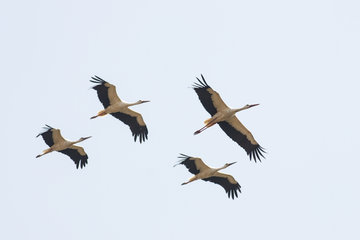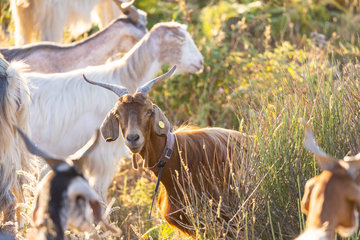Ears for Icarus
Russian rocket delivers antenna for animal tracking system to the International Space Station
On 13 February, a Russian rocket carried the antenna of the Icarus mission to the International Space Station (ISS). The Icarus on-board computer was thus joined by another key component of the orbiting animal tracking system. Using the system developed by scientists from the Max Planck Society in cooperation with the Russian space agency Roscosmos, the German Aerospace Center and the University of Konstanz, researchers around the world will be able to study the movements of animals and determine the conditions in which they live.

The Russian Soyuz Progress rocket, which lifted off from the Baikonur Cosmodrome in Kazakhstan today at 9:13 a.m. Central European Time, was carrying a precious scientific cargo: the Icarus antennas, which weigh nearly 200 kilogrammes. "The successful launch marked another mission milestone. A hitch at this point would have been unthinkable and could have set the Icarus project back years. There was therefore a collective sigh of relief when everything went to plan. After the launch, we joyfully toasted our success − of course with a compulsory glass of vodka," says Martin Wikelski, Director at the Max Planck Institute for Ornithology in Radolfzell and head of the Icarus Mission.
The antennas delivered to the ISS comprise three receiving antennas measuring up to two metres in length and one transmitting antenna. The receiving antennas can pick up data from 15 million or more transmitters worldwide, moving anywhere on Earth . These miniature transmitter tags, which weigh in at just five grammes each, are based on a new technology and were developed specially for the Icarus mission. Even small animals such as migratory birds can now be tagged and tracked. The first animals to be fitted with the new Icarus tags will be blackbirds. "Starting in June, we will tag around 300 blackbirds with our mini-transmitters at 35 locations in Germany. They will help us to learn where the birds live, where they fly to, and where they die," Wikelski explains.

The transmitting antennas, on the other hand, will send configuration commands to the Icarus tags, as well as precise orbital data about when the tags will next be in contact with the receiving station. The antennas, which have receivers mounted on two fold-out vanes, receive signals from an area measuring 30 by 800 kilometres. Because the trajectory of the space station moves 2,500 kilometres to the west each time it circles the globe, the receiving antennas can cover up to 80 percent of the Earth's surface in a day.
In early August, the two Russian cosmonauts Oleg Artemyev and Sergei Prokopiev will set out on a five-hour spacewalk to mount the antennas on the outside of the Russian service module of ISS. This will launch a roughly two-month test phase to check that all the components of the system are working correctly. If all goes well, Icarus will begin scientific operations by autumn of this year. Around 150 research projects around the globe plan to track the migrations of a wide range of animals, including sea turtles, jaguars, bats and migratory birds.













